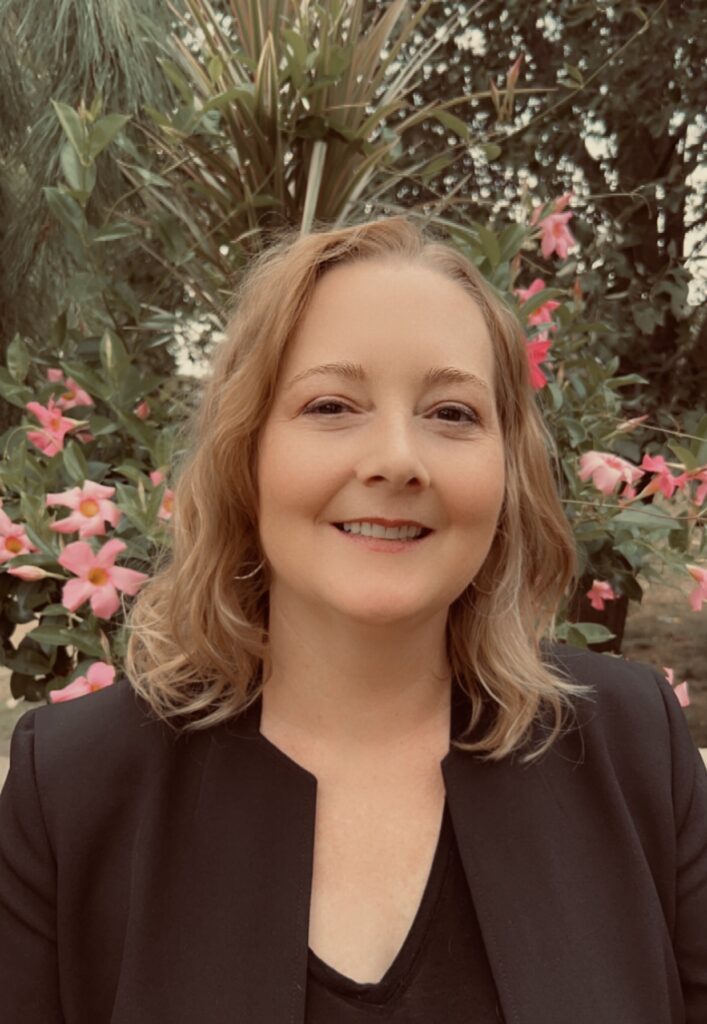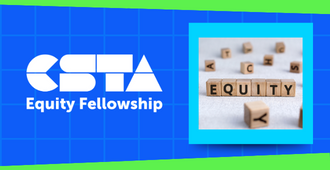By: Michelle Meier
Elena Aguilar said, “Every conversation in education is about equity.” Allen Antoine and Andrea Wilson Vasquz said, “Every conversation in computer science is an equity conversation.” And they are all right. Many people have been working hard to ensure that every conversation about computer science education is about equity. Equity and computer science work doesn’t stop with computer science education. Computer science is now embedded into every aspect of our lives. So, let’s say the quiet part out loud. We don’t just want to improve computer science education, or the computer science and tech industry. We want to improve the world and the systems that support it. Improving computer science is our way of doing that.
To improve the world, we have to ensure everyone, regardless of their location, is prepared to succeed. To do that, we need to prepare students to more deeply understand how our complex history impacts not just current beliefs and systems, but our current technology. We need to help them understand the flaws in the data that technology is based on, as well as the structural and historical causes of that data.
So how do we do that? Continuing to diversify our classrooms, both who is learning and who is teaching, is a start. But it can’t end there. Equity conversations are everyone’s responsibility. When you consider that 68% of computer science teachers are white (according to the CSTA Landscape Report), we must be prepared to facilitate these conversations. This is not an issue that just impacts women and underrepresented populations, but it impacts all of us regardless of where we live.
Figuring out how to have these conversations can be difficult, especially when we are just beginning. What can educators do? These three things are a great place to start: educate ourselves, use Culturally Responsive Teaching and Culturally Responsive Pedagogies, and bring Social Justice into the classroom.
Educate Ourselves
As teachers, we need to educate ourselves about the impacts of technology on different groups of people. We must educate ourselves about how our history, and societal and political systems influence those impacts. Many times students aren’t aware of the impacts of technology and our systems on different groups of people. We see the world through our experiences, and those with privilege often assume others have that same privilege. We must look for stories of how those with less privilege experience the world so we can build our understanding and course of action to change that. This is easy to do. There are movies, books, and even social media accounts, like @racialequityinsights on Instagram, devoted to sharing examples and learning about this. We also need to educate ourselves about how our words and actions may impact others. It is important we educate ourselves because without doing this, there is an increased possibility we could cause harm to others due to our lack of knowledge, both physically and emotionally, and by continuing to perpetuate varying systems of oppression.
Another way to educate ourselves is to examine our own biases. Examining our biases can be difficult. It can force us to see ourselves in an unflattering light. But we have to remember that everyone has biases, and for those of us with privilege, it is even more important to reflect on where those biases come from and how they may be impacting our words and actions. Project Implicit is one way to test bias. Project Implicit does not predict racist behavior, and taking a test once is not a finite way to measure one’s own bias. I try to use these tests regularly and reflect on the results to provide a foundation for my words and actions.
Use Culturally Responsive Teaching and Culturally Responsive Pedagogies
It is important to educate ourselves about Culturally Responsive Pedagogies and actively use these strategies in our daily practice. In computer science education we talk a lot about Culturally Responsive Pedagogies and Culturally Responsive Teaching so teachers can honor the culture and experiences of the students that are in the room. However, according to the CSTA Landscape Report, 35% of white teachers do not feel comfortable with Culturally Responsive Pedagogies. These online learning opportunities from CSTA can help increase comfort with Culturally Responsive Pedagogies.
Ensuring your curriculum highlights people of different experiences and backgrounds is a great step. Our underrepresented students need to see themselves and their experiences reflected in the learning, the learning examples, and the experts we bring into the classroom. It is also important for our students with privilege to see people other than themselves reflected in the learning. This often doesn’t happen in the thousands of schools and districts across the country that are considered less diverse. When we don’t see diverse faces in our classrooms, we often don’t think they need to have diversity represented. However, we need to remember that representation provides our underrepresented students with mirrors to see themselves and it provides windows for our students with privilege through which they can see others.
How can we help classrooms, that aren’t as diverse, view and honor others? Consider who isn’t represented in the classroom compared to the larger community. That community should not only be the school, district, or town or city itself, it should also be the state, the country, even thinking about our global community. Teachers should work to ensure those who aren’t represented in the classroom, their experiences, and their culture, are still visible in the curriculum and classroom discussions. In less diverse spaces, we can get to the intent of Culturally Responsive Pedagogies by finding ways to see, incorporate, and honor those we don’t physically see or hear every day.
Bring Social Justice into the Classroom
Bringing Social Justice conversations into the classroom can feel daunting, especially in some states where DEI initiatives and ideas are under attack. Statistics from the CSTA Landscape Report, show that many teachers are taking the easy way out with Social Justice. Only 40% of educators teach about the impacts of computing, 42% about ethics, and only 20% teach about accessibility. Even more disappointing is that 31% of educators feel that Social Justice doesn’t belong in the computer science classroom. I want us to remember that computer science is in everything and will shape our future. The question is, if it doesn’t belong here, where does it belong?
There are two ways we can bring Social Justice into our classrooms. One is to have students look for solutions to issues in our society, using computer science and technology. Before students can do that, we have to help them understand the issues within society that involve or are the result of technology. This goes back to that first step of educating ourselves. As our education on the topic develops, we have to make sure we are sharing that information with our students and use the base laid by representation and Culturally Responsive Pedagogies to ease our discomfort with Social Justice conversations.
The rise of artificial intelligence and its use in the medical field has provided multiple examples and data about how the technology is failing certain groups of people. You can use Joy Buolamwini’s work, “Ain’t I a Woman” and “Coded Bias” and the accompanying lesson plans to start these conversations. When discussing technology issues in health care, you can reference the popular algorithm used to prioritize patient care. This algorithm was intentionally written to not consider race, but it did. The developers didn’t understand the deeper historical, systemic, and societal issues that impacted the data. Our history, society, and systems created data that the developers didn’t truly understand and as a result, their algorithm was flawed.
It is important to help students understand that technology doesn’t work the same for all groups of people, and that technology can have adverse effects on different groups, both directly and indirectly, by reinforcing biases and stereotypes. That understanding can help students in less diverse classrooms better understand their own privilege in our society, and understanding is the first step to improving society. As we do all of this we may even grow allies and accomplices along the way.
About the Author

Michelle Meier is a Computer Science Consultant in Waterloo Iowa. Through her work at Central Rivers Area Education Agency, Michelle strives to improve equitable access to quality computer science learning opportunities by working with multiple school districts in the state. This work includes providing assistance in creating and implementing computer science plans, creating and facilitating professional learning and coaching teachers to help them better understand student standards and best practices in computer science education. She expands with with the statewide AEA computer science team as well as the state ECEP group to expand this work and help ensure that quality education is accessible statewide. In addition, Michelle is also involved in a partnership between the AEAs and the University of Northern Iowa to help teachers earn their computer science teaching endorsements.

